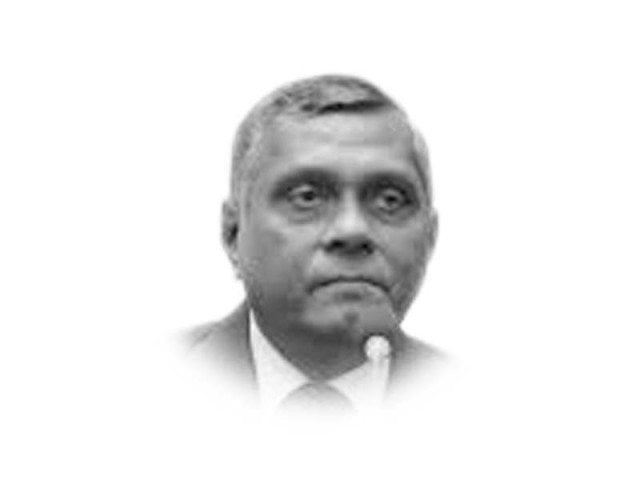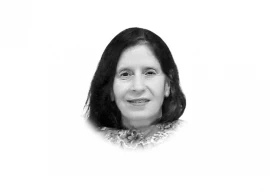
Dramatic events unfolding in Bangladesh over the past week or so led to the ouster of Prime Minister Sheikh Hasina from power and her escape to India. The students' agitation against the repressive policies of the Awami League regime, including the job quota system, resulted in around 400 deaths amid a massive upheaval across the country. However, dust is gradually settling in with the installation of a caretaker government headed by Nobel Laureate Dr Muhammad Yunus.
The Sheikh Hasina regime that came into being after the questionable January 2024 elections looked invincible due to the government's authoritarian grip on state institutions and highhanded tactics against its political rivals including the arrests of the leaders of main opposition party BNP as well as the banning of Jamaat-e-Islami. However, the regime succumbed to the nationwide students' protest and fell like a house of cards?
The question persists whether Skeikh Hasina is a dead horse or she can still return to power through political manipulation at home and overt support from the Narendra Modi regime next door? Also, one wonders how far the so-called second revolution in Bangladesh will ensure free and fair elections and establish genuine democracy. These are the questions which are being raised by those who are perturbed by the fluid situation in Bangladesh.
The installation of Dr Muhammad Yunus as the Chief Adviser of Bangladesh's interim government in the wake of a successful uprising by students, which led to the fall of the Sheikh Hasina government, reflects the people's power which prevailed over the arrogant and repressive Awami League regime. The manner in which Prime Minister Sheikh Hasina fled her country on army's intervention proves the fragility of her popular support and her reliance on India and a bunch of corrupt mafia to keep her in power. When the power of students who had made up their mind to send her packing from power peaked into a civil war, the military forced Prime Minister Hasina to step down and leave the country or face the wrath of the people.
About 49 years ago, in August 1975 to be exact, Sheikh Hasin'a father, Sheikh Mujibur Rehman, then President of Bangladesh, was killed by his own military along with his entire family, excluding his two daughters Sheikh Hasina and Sheikh Rehana who were abroad at that time. Mujib, the Father of the Nation, had become extremely unpopular among the masses. And now this year, in August again, history has repeated itself - the only difference being that while Sheikh Hasina did lose power, she managed to escape to India instead of being killed by the agitating public.
One can analyse the political change in Bangladesh leading to the ouster of Sheikh Hasina's regime from three sides, as follows:
First, the ambitions of the military generals to run the country after the unceremonial exit of Sheikh Hasina turned out to be a non-starter because the student leaders who spearheaded the agitation against the job quota system and other repressive government polices made it clear that they will not allow the military to take advantage of the situation and seize power. They were the ones who suggested the much-respected name of Dr Muhammad Yunus to head the government and arrange free and fair elections.
Second, given the Awami League's experience in political manipulation and Sheikh Hasina's close ties with India, there is always a possibility that she will try to return to Bangladesh to get back power. But, such is a remote possibility because of Sheikh Hasina's alleged corruption, nepotism and political repression against opposition leaders, particularly the BNP chief and former prime minister Khaleda Zia and those of Jamaat e-Islami. Knowing that her popularity has touched the pits and the majority of students will neither forget nor forgive her cruel and repressive measures to quell their movement, she will face a serious backlash if she tries to return to her home country.
And third, not only does the Awami League but some circles in India too see Pakistan and China behind the dismissal of Sheikh Hasina from power. So much so that Sheikh Hasina's son who lives abroad said that after the ouster of his mother from power, Bangladesh will become another Pakistan. But, such allegations, which were also refuted by Pakistan's Foreign Office, only reflect venom and paranoia of Sheikh Hasina and India against Pakistan. It is pertinent to mention here that both India and Awami League had also accused Pakistan of playing a role in the August 15, 1975 massacre of Sheikh Mujibur Rehman and his family.
As Bangladesh is to pass through yet another election process, the challenge will be whether to make the country continue as a secular state or turn it into an Islamist one. It seems a major beneficiary of the ouster of Sheikh Hasina's government is Jamaat-e-Islami which played a leading role in the successful agitation of the students. More than the BNP which is quite weak because of the years of repression it suffered under the Sheikh Hasina regime, it is the Jamaat which has remained intact despite the hanging of its leaders for collaborating with the Pakistani military in the War of 1971. Jamaat's resurgence will certainly galvanise its Islamic identity, but it will be opposed by the Awami League remnants who would want Bangladesh to continue treading the path of secularism.
While it is premature to predict which way Bangladesh will be heading, but one thing is quite certain that the era of political repression and Pakistan bashing which had deepened during the 15-year-long rule of Sheikh Hasina will at least ebb. It is true that under Sheikh Hasina, Bangladesh excelled in economic, human and social development but the people of Bangladesh were not ready to surrender their freedom and their age-old struggle for democracy.
The lesson which one can learn from recent change in Bangladesh is the invincibility of the power of students and people at large who shattered the myth of Sheikh Hasina's hold over power.




















COMMENTS
Comments are moderated and generally will be posted if they are on-topic and not abusive.
For more information, please see our Comments FAQ